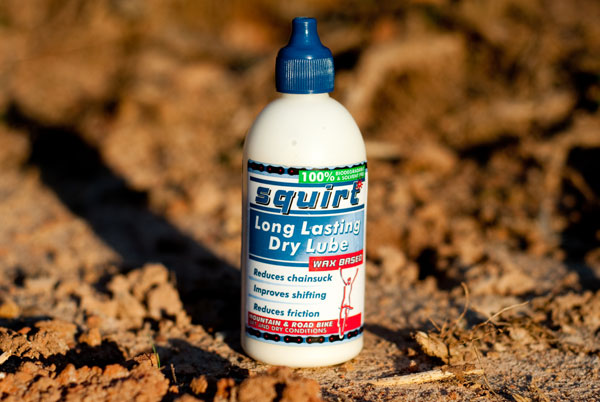For 2009, Trek Mountain Bikes completely revamped their downhill and freeride offerings by releasing the 2009 Trek Session 88 FR and DH. The Session 88 FR is all new for 2009 and features technologies like Full Floater, Active Braking Pivot and EVO to give this new platform a better ride than the previous Session 77. Over the past couple of months, we have had the chance to put this new freeride sled from Trek Bikes through some trail abuse, so how did the Session 88 FR do?
More on the Trek Session 88 FR
 You can check out the Trek Bikes website for all of the down and dirty technical aspects of the new technologies presented on the 2009 Trek Session 88 FR. For the purposes of this review, know that they were aiming for a plusher, stiffer ride that was still active under hard braking. Along with a complete revamp of the Session lineup, the Bontrager components that are bolted up to the Trek Session 88 FR are completely new for 2009 as well. The 2009 Shimano Saint group (<—click for review) rounds out the component offering to provide a high end build kit to go along with this $6,049 freeride monster.
You can check out the Trek Bikes website for all of the down and dirty technical aspects of the new technologies presented on the 2009 Trek Session 88 FR. For the purposes of this review, know that they were aiming for a plusher, stiffer ride that was still active under hard braking. Along with a complete revamp of the Session lineup, the Bontrager components that are bolted up to the Trek Session 88 FR are completely new for 2009 as well. The 2009 Shimano Saint group (<—click for review) rounds out the component offering to provide a high end build kit to go along with this $6,049 freeride monster.
From TrekBikes.com:
The Shore special. A gravity sled machine. Andrew Shandro’s go-to park bike. Whatever you want to call it, the Session 88 FR is engineered with one thing in mind: highly technical downhill riding. With a freeride-specific component spec like the RockShox Totem, Shimano Saint and Fox DHX 5.0, the Session 88 FR can hit the stunts that make your spine tingle, the drops that make you drool and the berms that bring a smile to your face.
If you are wondering what the real difference is between the FR and DH versions of the Trek Session 88, you are basically looking at a component group and color scheme difference…the geometry numbers and rear travel (203mm or 8 inches) match. For the complete build list and more pictures of the 2009 Trek Session 88 FR, check out this preview post on MTB198.
The 2009 Trek Session 88 FR Build Kit
The 2009 Trek Session 88 FR build comes spec’ed with what you would expect out of an ultra high end freeride mountain bike. Without getting into too much detail (don’t want this to be a review of the components and not the bike…you can check out full review of the Shimano Saint group here), the components fared very well and the RockShox Totem coil has to be one of my favorite forks of all time. This build suits my riding style better than the DH version of the Session as I am not a DH racer…I am a recreational freeride rider.
The Bontrager components, for the most part, performed flawlessly. The bars were wide enough, the stem had enough clamping force, the saddle was ok. The Bontrager Big Earl pedals stuck to my 5.10’s like glue with the multiple threaded pins. They were a little bit thicker than I would have liked, but I did not notice any excessive pedal strikes. The Big Earl wheelset provided a nice, wide rim that spread the tire patch out perfectly. The overall build of the wheel was stiff and I did not notice any extreme flexing through hard g-outs and rock gardens. The 24 point engagement left a little to be desired under sudden fast acceleration and technical, “double clutch” situations. If I had one thing to change about the whole group, it would be the engagement. A 72 point rear hub would have been fantastic on this bike.
For the money, you get a solid component group that should withstand just about any abuse you can throw at this bike. In true Trek Bikes fashion, most of the components are custom color matched to the frame in a silver and gold combo. Even the Cane Creek headset is gold…
The Trek Session 88 FR Frame
For 2009, Trek Bikes moved to a larger diameter, thinner walled, hydro-formed tubed frame to increase stiffness and keep weight down. With a final build weight at 39.5 pounds, the Session 88 FR is light by 203mm rear travel freeride bike standards. The DHX 5.0 rear coil shox by Fox Racing Shox is a custom tuned version built specifically for the Session 88. Trek performed real world, blind tests with their pro’s to get the damping and compression action just right for the Session 88. This attention to detail really pays off when you start getting this mountain bike dirty.
Cable routing and general frame maintenance is pretty straight forward with nothing about the general design that gets in the way of normal use. The EVO, ABP and Full Floater looks like a traditional four bar until you look closer and see the floating bottom pivot and rear triangle pivot centered on the rear axle. The new design makes for a cleaner look on the 2009 Trek Session 88 FR as compared to the previous Session 77.
The Session 88 FR utilizes the new tapered steerer tube design (they call it E2) that we are starting to see on a lot of mountain bikes (1.5″ bottom bearing matched with a 1-1/8″ top bearing). While I 100% completely agree with the mechanics of the idea, it does introduce a new “standard” to the mountain biking world to further confuse the options for riders. The idea is that most of your bearing load is on the bottom bearing, so by using a larger bearing and tube, you are increasing bearing life and stiffness at the same time. The top bearing sees very little wear, so you can save weight by tapering to a smaller diameter and bearing. Further more, a tapered fit is always stronger than a straight. The downside…you can not use a conventional 1.5″ steerer tube fork. You are limited to a tapered steerer tube or a 1-1/8″ with a reducer on the bottom bearing.
How does the Trek Session 88 FR Ride?
Enough talk about the technologies, frame and components, how does this new freeride mountain bike from Trek Bikes handle the rough stuff? The redesign to the suspension technologies and rear end of the Trek Session 88 FR really paid off on the trail. The rear end of the Session 88 FR is incredibly stiff with the hydro-formed tubes and 150 mm spacing. The one piece EVO link and Full Floater bottom link keep the rear triangle in line with the front during hard sideways hits and landings. As you blow through rough rock gardens, the bike tracks a straight line and just begs you to turn around and hit it faster on the next run.
One of the first things you notice on the new Session 88 FR from Trek is the extreme seat tube angle (58 degrees). At first, this seemed a little awkward in comparison with more upright ones on other fr/dh rigs, but the more saddle time I put in…the easier it was to get my weight over the rear tire when needed. When the saddle is at “get to the trailhead height”, you are really sitting over the rear tire, so straight up pedaling on flat terrain while seated is a chore.
Under braking, the suspension stays active as advertised. There was almost no noticeable suspension stiffening while preparing for turns or occasional speed scrubs. The rear suspension on the Session 88 FR was plush and soaked up small bumps while not sacrificing mid-stroke control. Under larger hits, the suspension felt almost bottomless with no harsh, slamming bottom outs. Landing the Session 88 FR is basically a non-event…it just seems to glide over transitions.
Even with 203mm of rear wheel travel, the Session was surprisingly nimble. I never felt like I was working against the travel during fast sprints or under pedaling. With some 8″ travel mountain bikes, you feel like you are pushing through the travel just to get power to the ground, but the Session 88 FR was efficient and allowed you to really put the hammer down and move the bike when you needed to.
The low bottom bracket and geometry was a blast to carve through hard berms. That low center of gravity matched with the slack seat tube angle puts the rider in the right position to really push hard in and out of berms…keeping speed throughout the transition. This same bb height did have to make you pay a little bit more attention on obstacles and rock gardens as the thicker pedals were a little bit more prone to strikes. A quick change in mental awareness got rid of most that.
Trek Session 88 FR vs. Session 77
Luckily, I have a friend that is a long time rider on a Session 77 who just happened to upgrade it to a RockShox Totem Coil and Fox Racing Shox DHX 5.0, so we also got to do a side by side comparison with last years Trek Session 77 with similar component setups. The Session 88 FR was noticeably stiffer and plusher under braking than the previous Session 77. The Session 88 also held lines easier while also feeling like a more stable bike under normal riding. The contrasting seat tube angles will take some getting used to for previous owners of the Session 77, but once you get used to it…you will come to enjoy the ability to get your weight back easier.
Conclusions on the Session 88 FR from Trek Bikes
Overall, the Trek Session 88 FR gives you a nimble, light freeride bike that handle the abuse of serious freeride mountain biking. The rear suspension is plush enough to handle small bumps easily and keep mid-travel controlled, but not so plush that it feels like a plow bike that is work to move around. I have heard some reports of the thinner walled, hydro-formed tubing denting under strong rock hits, but out of the Session 88’s that I have seen (and this test rig)…I have not seen a dent yet. If you are looking for a strong, nimble freeride mountain bike…this may be your partner for your local lift.
Good Trek Session 88 FR
- Weight – 39.50 lbs built
- Active suspension under braking
- Solid component offering
- Nimble, active suspension setup
- Super stiff rear end
Bad Trek Session 88 FR
- Price – $6,049
- Low engagement rear hub
- E2, Tapered steerer/headtube limits fork options
- Some riders might not be a fan of Bontrager components throughout





